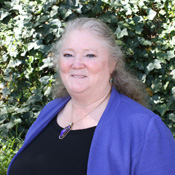Autism—The Latest Research
April 7, 2017

Johnny has been diagnosed with autism. He is 12 years old and non-verbal. Mom and Dad are exhausted because Johnny is not sleeping at night. Johnny regularly goes to school and has one on one help with his studies because he is struggling. Paisley is also 12 years old and has been diagnosed as autistic. Paisley is very smart and obsesses about horses. She likes to draw horses, complete horse related research, and enjoys discussing her findings with others. Johnny and Paisley are both autistic but, not alike. They may have the same diagnosis but, their symptoms are different. Individuals on the spectrum are all different a wide range of symptoms and severities does present.
Many scientists on working on the cause of autism and so far there is no cure. There are numerous components that contribute to onset of Autism. Medications can help with behaviors and anxiety; however, early intervention is imperative.
“The definition of Autism spectrum disorder is the name for a group of developmental disorders. ASD includes a wide range, “a spectrum,” of symptoms, skills, and levels of disability”(NIMH, 2017).
People with ASD often have these characteristics:
On-going social problems that included communicating and interacting with others
Repetitive behaviors as well as limited interests or activities
Symptoms that typically are recognized I the first two years of life
Symptoms that hurt the individual’s ability to function socially, at school or work, or other areas of life.
People whose symptoms were previously diagnosed as Asperger’s syndrome or Autistic Disorder are now included as part of the category called Autism Spectrum Disorder (ASD). There are two main types of behaviors: “restricted/repetitive behaviors” and “social communication/interaction behaviors”.
Restrictive/repetitive behaviors may include:
Repeating certain behaviors or having unusual behaviors
Having overly focused interests, such as with moving objects or parts of objects.
Having a lasting, intense interest in certain topics, such as numbers, details, or facts.
Social Communication/interaction behaviors may include:
Getting upset by a slight change in a routine or being placed in a new or overly simulating setting
Making little or inconsistent eye contact
Having a tendency to look at and listen to other people less often
Rarely sharing enjoyment of objects or activities by pointing or showing things to others
Responding in an unusual way when others show anger, distress, or affection
Failing to, or being slow to, respond to someone calling their name or other verbal attempt to gain attention
Having difficulties with the back and forth of conversations
Often talking at length about a favorite subject without noticing that others are interested or without giving other a chance to respond
Repeating words or phrases that they hear, a behavior called echolalia
Using words that seem odd, out of place, or have a special meaning known only to those familiar with that person’s way of communication
Having facial expression, movements, and gestures that do not match what is being said
Having an unusual tone of voice that may sound sing-song or flat robot-like
Having trouble understanding another person’s point of view or being unable to predict or understand other people’s actions.
People with ASD may have other difficulties, such as being very sensitive to light, noise, clothing, or temperature. They may experience sleep problems, digestion problems, and irritability. Strengths and abilities may include:
Having above-average intelligence-the CDC reports 46% of ASD children have above average intelligence
Being able to learn things in detail and remember information for long periods of time
Being Strong visual and auditory learners
Exceling in math, science, music, or art.
Diagnosing ASD, young children with ASD can usually be reliably disposed by age two. Diagnosing ASD in adults is not easy. In adults, some ASD symptoms can overlap with symptoms of other mental health disorders, such as schizophrenia or attention deficit hyperactivity disorder (ADHD).
Risk factors:
Gender boys are more likely to be diagnosed with ASD than girls
Having a sibling with ASD
Having other parents (a mother who was 35 or older, and/or a father who was 40 or older when the baby was born)
Genetics-about 20% of children with ASD also have certain genetic conditions. Those conditions included Down syndrome, fragile X syndrome, and tuberous sclerosis among others” (NIMH, 2017).
“Recently, researchers have discovered other genetic mutations in children diagnosed with autism, including some that have not yet been designated as named syndromes. People with ASD also have a higher than average risk of having epilepsy. Children whose language skills regress early in life-before age 3-appear to have a risk developing epilepsy or seizure-like brain activity. About 20 to 30 percent of children with ASD develop epilepsy by the time they reach adulthood. Additionally, people with both ASD and intellectual disability have the greatest risk of developing seizure disorder” (NIMH, 2017).
How is ASD diagnosed? ASD symptoms can vary greatly from person to person depending on the severity of the disorder. Symptoms may even go unrecognized for young children who may have mild ASD or less debilitating handicaps.
Very early indicators that require evaluation by an expert included:
- No babbling or pointing by age 1
- No single words be age 16 months or two words by age 2
- No response to name
- Loss of language or social skills previously acquired
- Poor eye contact
- Excessive lining up of toys or objects
- No smiling or social responsiveness
Later Indicators include:
- Impaired ability to make friends with peers
- Impaired ability to imitate or sustain a conversation with others
- Absence or impairment of imaginative or social play
- Repetitive or unusual use of language
- Abnormally intense or focused interest
- Preoccupation with certain objects or subjects
- Inflexible adherence to specific routines or rituals
“For many children, symptoms improve with age and behavioral treatment. During adolescence, some children with ASD may become depressed or experience behavior problems, and their treatment may need some modification as they transition to adulthood. People with ASD usually continue to need services and supporters as they get older, but depending on the severity of the disorder, people with ASD may be able to work successfully and live independently or within a supportive environment. How is Autism treated? There is no cure for ASD. Therapies and behavioral interventions are designed to reedy specific symptoms and can substantial improve those symptoms. The ideal treatment plan coordinates therapies and intervention that meet the specific needs of the induvial. Most health care professionals agreed that the earlier the intervention the better” (NIMH, 2017).
According to the National Institute on Mental Health, a study was completed that evaluated the use of antibiotics during pregnancy in relation to autism diagnosis.
What were the findings of the study?
- Children whose mother reported common infections, such as respiratory infection (like the common cold or a sinus infection), urinary tract infection, or genital infections, during the pregnancy were not at risk for autism spectrum disorder.
- Children whose mother reported flue, fever lasting more than a week, or antibodies use during pregnancy were at great risk for autism spectrum disorders; however, the total number of children with autism spectrum disorders was small.
- This study was exploratory and more research needs to be done to understand risk factors for autism spectrum disorders.
What were the results of this study? - Children whose mothers reported having the flu during pregnancy were 2 times more likely to have been diagnosed with autism disorder, a subgroup of ASDs, when compared with children whose mothers did not report having the flu.
- Children whose mothers reported having a fever lasting more than a week during the first 8 months of pregnancy were 3 times more likely to have been diagnosed with autism disorder, a subgroup of ASDs, when compared with children whose mothers did not report having a fever lasting more than a week.
- Children whose mothers reported using antibodies during pregnancy also has a small increased risk for having been diagnosed with any ASD when compared with children whose mothers did not report using certain antibiotics.
- We found no association between a child’s risk of being diagnosed with any ASD and common maternal infection like respiratory infection (like the common cold or a sinus infection), urinary tract infection, or genital infection during pregnancy.
- Due to the many statistical test that were done, the positive finding on flu, fever lasting more than a week, and use of antibiotics may be chance findings. In the study, more of the mothers who reported flu, fever lasting more than a week, or use of antibiotics during pregnancy did not have a child with an ASD. For example, the total percentage of women who reported having flu and had a child with autistic disorder was less than 1% of all mothers who reported having the flu” (CDC, 2017)
As a country, we continue to advance in autism spectrum research and awareness. Physicians are now able to diagnosis children quicker, which allows families to access resources in a timelier manner. Also, advocacy groups continue to rise to the forefront of our country and these organizations provide awareness and advocacy for individuals and their families. Just recently on April 2nd, the world celebrated World Autism Awareness Day. On this particular day individuals around the world are encouraged to wear blue and events are held worldwide. However, for these families autism awareness is every day in their home so, continued research, advocacy, and supports is imperative to the success of these individuals and their families.
—Sydney Mize, BS
 Sydney works closely with Alta Regional Center and provides initial home visits and care coordination for these clients. Sydney’s passion for Care Management comes for the desire to assist others. She enjoys finding solutions and helping those in need.
Sydney works closely with Alta Regional Center and provides initial home visits and care coordination for these clients. Sydney’s passion for Care Management comes for the desire to assist others. She enjoys finding solutions and helping those in need.
www.elderoptionsca.com
Resources:
Centers for Disease Control and Infection (2017). Autism Spectrum Disorder. Retrieved from https://www.cdc.gov/ncbddd/autism/index.html
National Institute of Mental Health (2017). Autism Spectrum Disorder. Retried from https://www.nimh.nih.gov/health/topics/autism-spectrum-disorders-asd/index.shtml

